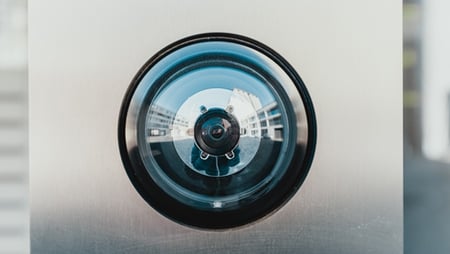In today’s unpredictable environment, the days of “It won’t happen here” are falling by the wayside. Preparing for the threat of an active shooter is a top priority at healthcare facilities, regardless of size or location.
Healthcare poses its own set of unique risk factors: 24/7 foot traffic, high-stress scenarios, multiple entrances, and skyrocketing rates of employee burnout. With health systems across the nation seeking proactive strategies to bolster security, we set out to discover the role facilities leaders can play in mitigating threats within their walls…
Enhancing Security at Nemours
For the Nemours Foundation, the 2016 Pulse nightclub shooting hit close to home and spurred leadership into action. Jeff Kent, Managing Director of Corporate Facilities, shared that his CEO and CFO gathered in his office the next day to discuss how security efforts could be ramped up across the enterprise.
The result was a physical security audit on the five biggest campuses, which Kent underestimated in terms of time and effort. “Local law enforcement and Homeland Security are being bombarded by requests and have been tremendously helpful for us. It truly takes an enormous amount of time; patience is important,” he said.
Nemours is currently undertaking a multi-year process to strengthen security, based on the findings for the five big campuses. These modifications will then move to the smaller clinics. Kent acknowledged the difficulty of designing welcoming facilities that are open and accessible, yet safe.
“Care environments are so different security-wise from a corporate building. Having metal detectors like an airport isn’t a good solution functionally or aesthetically,” he said. “We have to be able to walk that fine line, especially in pediatrics.”
Nemours is looking at high-tech, low-visibility equipment, such as hidden sensors that electronically test threats and read license plates. “There’s a lot of options out there that we will likely lean towards as we implement our programs,” he said.
 |
One of Nemours’ true north goals was active shooter training for employees at all locations, which is scheduled to be complete by the end of 2018. They currently have a group working in all major sites with local law enforcement and Homeland Security. Kent emphasized that training needs to be continuous, rather than a flip-the-switch deal for healthcare systems. At Nemours, employees undergo training in a larger setting before having follow-up sessions at the department level.
“While we’re prioritizing the creation of a corporate physical security department to enforce standards across the enterprise, one real eye-opener for me was the differences in law enforcement’s reactions to an active shooter situation from city to city,” Kent shared. “It varies across the board, so it’s important to work with different departments on a local basis.”
Collaboration with Local Law Enforcement
Kevin Tuohey, President of the International Association for Healthcare Security and Safety, also emphasized the critical need to collaborate with law enforcement early and often. He’s a strong proponent that it’s far too late to make introductions when an incident has occurred.
“Violence isn’t limited to urban areas; everyone is seeing an uptick. It’s not just an increase in reporting but an increase in violent activity that we didn’t see twenty years ago,” he said.
Scenario-based training and table-top exercises are a necessity for health systems, no matter how large or small.
“The human element of security preparedness is about recognizing that there’s a risk and not being paralyzed by it, but having senior leaders say, ‘This is important and we need to have everyone understand their role,’” he said. “Health systems need to establish and nurture those relationships with local law enforcement, as well as between their many internal departments.”
In today’s unpredictable environment, he recommends risk assessments regularly rather than annually, and always in the case of a significant change to the environment or program.
“For many years, we’ve been in our own tracks, but we need to bring everyone to the table to have this conversation,” Tuohey said. “If we’re going to train people to recognize symptoms of escalation and respond to a threat, we can’t train in silos. Clinicians must understand the facilities department’s role, who must understand security’s role, who must understand HR’s response, and so on.”

Greg Shaffer, a 20-year FBI veteran and global security expert, agrees that the days of working in silos must come to an end. For large health systems with thousands of employees, Shaffer emphasized that it’s essential for “every nurse, every janitor, and every employee to feel like they are the most important cog in the security plan. You need to develop a mechanism so that the information can be communicated to the right people to take the right action.”
Beyond training all employees on how to spot anomalies and suspicious behavior, it also needs to be understood what the exact course of action to take in response should be.
“It comes down to training, communication, and making every employee realize how important they are to the security of that building,” Shaffer said.
Designing for Security
According to Tuohey, new healthcare facilities must prioritize preventative security measures.
“It’s ideal to assemble a multidisciplinary risk assessment team, which means architects should invite law enforcement into the conversation,” Tuohey said. “These teams need to look at buildings at concept-level to identify risks and suggest mitigations.”
Tuohey emphasized that there are small, yet creative steps facilities leaders can take to mitigate risk. For instance, the space in the outpatient area near the entrance of an urgent care clinic, which typically contains a few interview spaces. By changing the doors and locks on 10-20% of these rooms, you can create a refuge for staff.
“To take that idea a step further, there could be a second door that leads to another area, so staff could lock the door behind them and escape. Creating protected zones makes all the difference in active shooter preparedness,” he said.
 |
“The systems that are most important when talking about active shooters are the ones that allow you to control the environment-- if you need to lock down, you can,” he said. “You also want a second barrier that may separate the ED (for example) from inpatient space, so that if there’s agitation it can be maintained without problems leaking into other areas of the hospital.”
Shaffer agreed on the importance of implementing panic buttons with drop-down walls and doors that lock automatically.
“If I’m a person with ill intent, the first person I’m going to harm is the security guard. Facilities need to consider technology that will isolate the shooter so he wouldn’t have free roam of an entire facility” he said.
Entry points are trouble spots that are particularly tricky for hospitals—it doesn’t help that many are manned by volunteers rather than armed security.
Shaffer shared that limited entry points are an absolute necessity, and that the importance of strict sign-in and sign-out procedures shouldn’t be downplayed. “This might also require putting in turnstiles or adding additional walls to funnel people through,” he said.
Conclusion
In the end, Shaffer shared a piece of life-saving advice for anyone ever in an active shooter situation. He advocates replacing the “run, hide, fight” mantra with “run, barricade yourself, fight.”
“Hiding does not work--the important thing is to move and get out. The average distance of a gunman shooting is less than two feet. Yet the hit rate on a moving target by an individual with a gun is 4%,” he said. “If you have a gun pointed at your face, your life comes down to one simple question: do you hope or do you act?”
Through proactive measures such as making design modifications, collaborating with law enforcement, and investing in staff training, facilities leaders can play an invaluable role in securing their hospitals and clinics.
Join us at HealthSpaces for more on innovations in healthcare facilities planning, design and construction.

Posted by
Collaborate with your Peers!
HealthSpaces is a community for people that plan, design, build and operate spaces where healthcare is delivered.
June 7-9, 2026 | Braselton, GA
Learn More




-4.png)
-Dec-09-2025-05-48-44-4379-PM.png)
-4.png)
-1.png)
-2.png)

Comments